Last year, after a €7.5m investment involving Fáilte Ireland, the Department of Agriculture and the Irish Heritage Trust, Johnstown Castle Estate, Museums and Gardens reopened to the public.
Even if you are not all that interested in the archive of agricultural machinery that is on display, Irish Country Living can assure you that visitors won’t be bored on the grounds with plenty to choose from.
On-site, there is a café (with an indoor space adhering to strict social distancing rules and an outdoor dining area when the weather suits), guided castle tours, a playground, walking trails and self-guided tours (two of which are featured below) at the museum.
The estate and gardens
Johnstown Castle itself sits grand on the site. Tours of the inside are available and are highly advised. You can book online and are asked to wear a face covering.
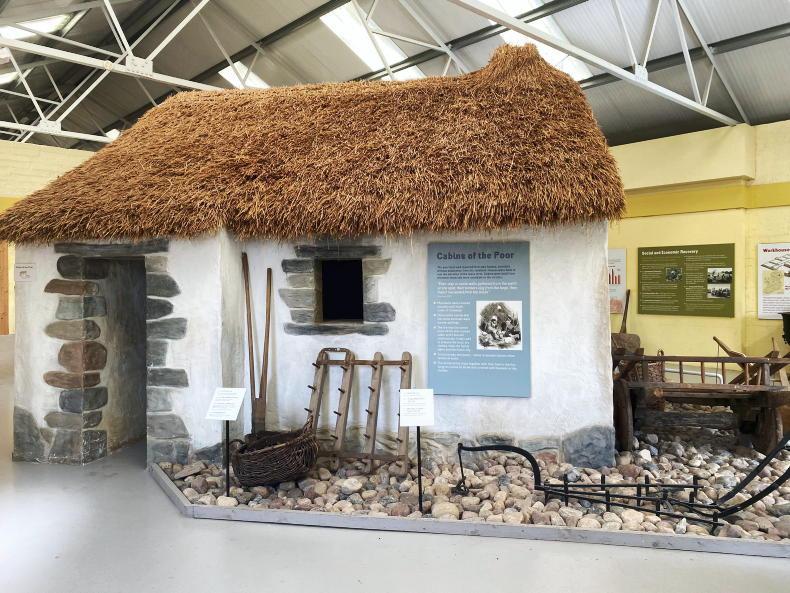
Cabin of the poor, Great Famine exhibition.
The castle was originally built as a simple tower in 1169, constructed for a team of 30 knights who came to Ireland with Strongbow. However, it was confiscated from the knights by English forces under the rule of Oliver Cromwell in 1650 and given to one of his soldiers. It then passed to the Grogan family who expanded it.
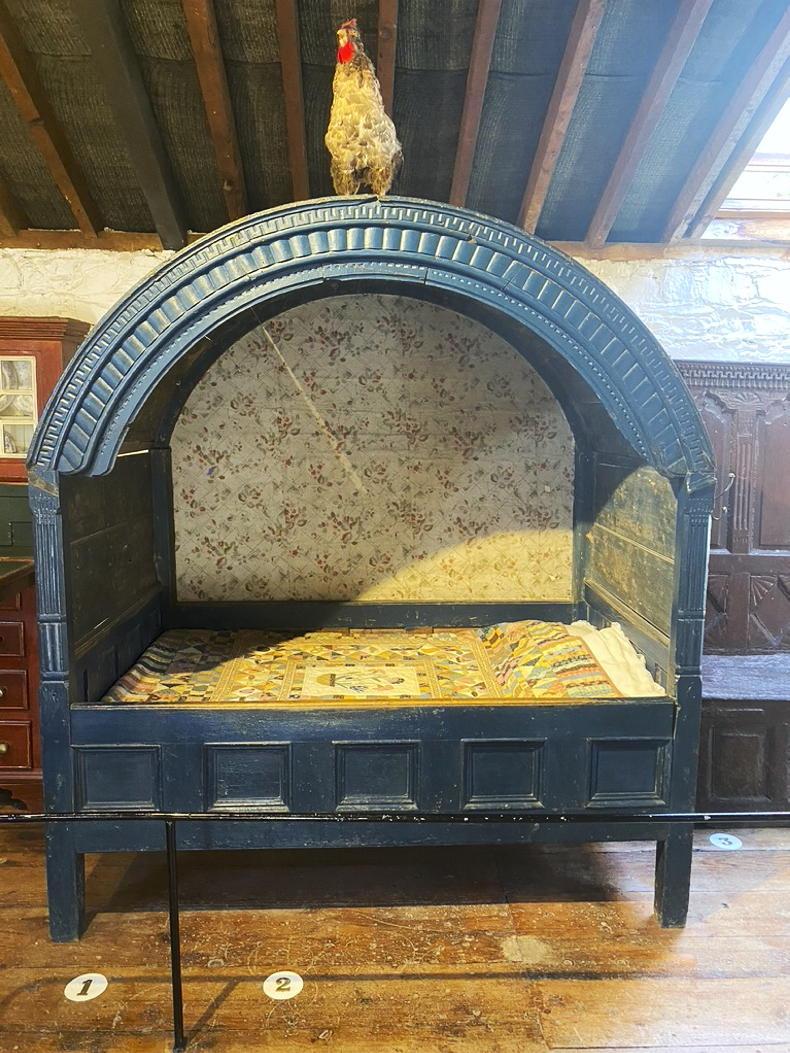
Settle bed.
Further expansion was carried out in the 1800s by Daniel Robertson for the owner, Hamilton Knox Grogan Morgan (what a name, eh?).
His granddaughter, Lady Adelaide Forbes (married to Maurice Victor Larkin) would go on to be the last private resident of the castle. Following her death in 1942 it was gifted to the government by her grandson to be used as an ag college.

A sample kitchen from the early 1900s.
From then until 1959, it was used for horticultural research and from 1960 to the early 2000s as a facility for soil research.
The gardens
On the tour given to Irish Country Living, we learned that the work of the head gardener is carried out on the various gardens across the estate, namely the Sunken Garden and the walled gardens.
The lower-walled garden is adorned with beautiful flowers and plenty of colour. It also has a greenhouse which is expected to undergo massive renovations.
The upper walled garden, which is currently sealed off from the public, is growing blueberry plants which are part of a project in conjunction with Kildalton ag college.
The old gardener’s house is also located in the upper walled garden. The Melon Garden has been transformed into a bee apiary, and next to it is the family graveyard.
Current descendants of the family have a right to be buried on the grounds if they so wish.
While there are gardeners and grounds staff who work on the gardens, the Irish Heritage Trust also has many loyal volunteers who use their spare time to keep the grounds neat.
The lakes
Also on site are three lakes – Castle Lake, Lower Lake and Garden Lake. The Lower Lake was not accessible to the public until last year but new pathways now give the public the opportunity to explore more of the grounds.
It is also close to the new children’s playground. Castle Lake is situated right in front of – you guessed it – the castle. Parallel to Castle Lake is a walkway lined with elegant statues, known as Statue Walk.
These were a part of Daniel Robertson’s romantic vision for the grounds. Garden Lake is the smallest lake of the three, but loved by many of the estate’s ducks, swans and pondhens.
Irish Country Furniture
Something a little bit different to the history of farm mechanics is the Irish Country Furniture exhibition.
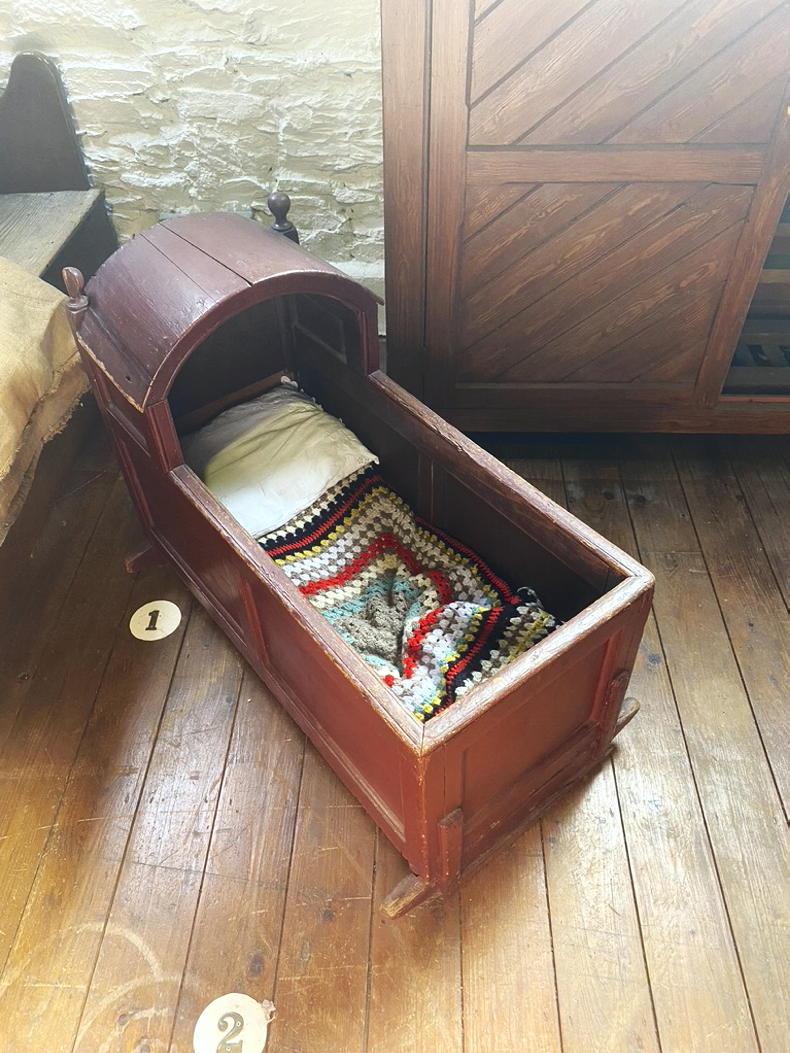
Hooded rocking cradle.
There are over 80 items on display, dating mainly back to the 19th and 20th century, with a few pieces from the 17th century.

Foldaway bed.
Much of the furniture was kept for its usefulness and economy of space, eg a settle bed could be used as a bed at night but as seating during the day, or a settle table which was used primarily as seating but also converted into a table for meal times.
Much of the furniture from these times was made primarily by the householder from pine, ash and elm which was then painted to protect against damage and damp.
The Village Crafts
This short but intriguing exhibition gives visitors a life-like simulation of an old village.
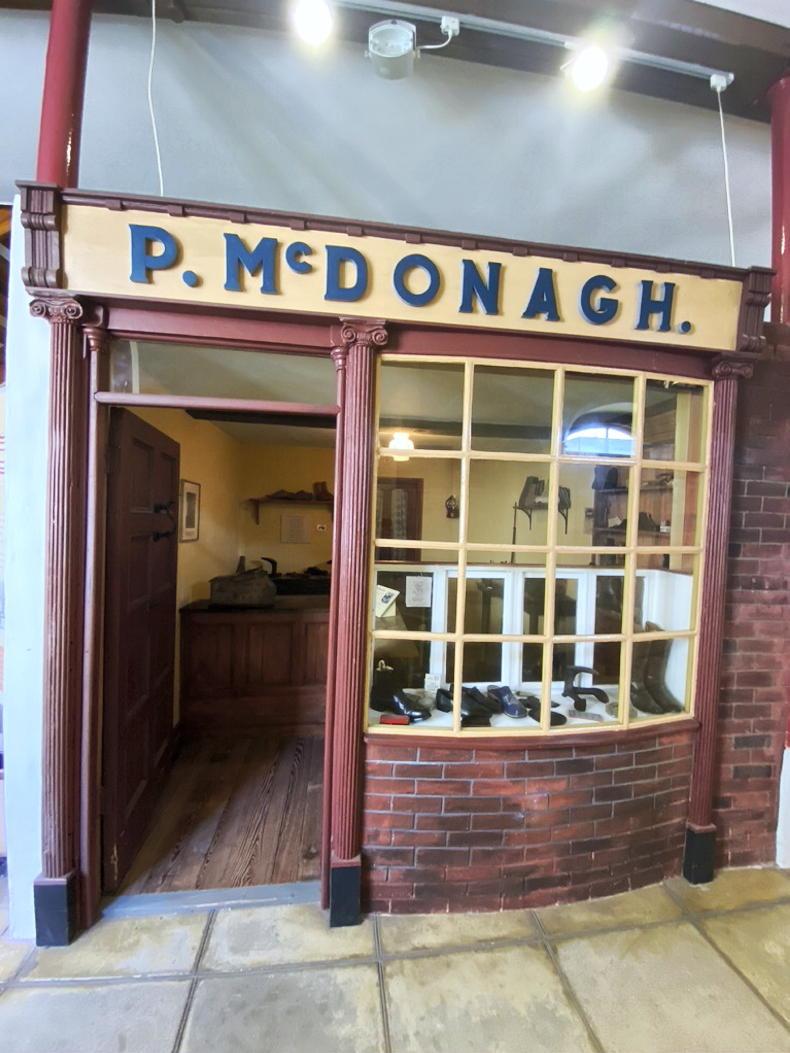
Village Crafts
Shop fronts include those of a tailor, a cooper, a shoemaker and a baker.

Tailors at Village Crafts.
The Irish Heritage Trust is the body responsible for the management and upkeep of Johnstown Castle Estate, Museum and Gardens. A special thanks to Brenda, Jess and Eamon for showing Irish Country Living around. For more information on Johnstown Castle, visit johnstowncastle.ie
Read more
Travelling back in tillage time
A step back in agri time at Johnstown Castle
Last year, after a €7.5m investment involving Fáilte Ireland, the Department of Agriculture and the Irish Heritage Trust, Johnstown Castle Estate, Museums and Gardens reopened to the public.
Even if you are not all that interested in the archive of agricultural machinery that is on display, Irish Country Living can assure you that visitors won’t be bored on the grounds with plenty to choose from.
On-site, there is a café (with an indoor space adhering to strict social distancing rules and an outdoor dining area when the weather suits), guided castle tours, a playground, walking trails and self-guided tours (two of which are featured below) at the museum.
The estate and gardens
Johnstown Castle itself sits grand on the site. Tours of the inside are available and are highly advised. You can book online and are asked to wear a face covering.

Cabin of the poor, Great Famine exhibition.
The castle was originally built as a simple tower in 1169, constructed for a team of 30 knights who came to Ireland with Strongbow. However, it was confiscated from the knights by English forces under the rule of Oliver Cromwell in 1650 and given to one of his soldiers. It then passed to the Grogan family who expanded it.

Settle bed.
Further expansion was carried out in the 1800s by Daniel Robertson for the owner, Hamilton Knox Grogan Morgan (what a name, eh?).
His granddaughter, Lady Adelaide Forbes (married to Maurice Victor Larkin) would go on to be the last private resident of the castle. Following her death in 1942 it was gifted to the government by her grandson to be used as an ag college.

A sample kitchen from the early 1900s.
From then until 1959, it was used for horticultural research and from 1960 to the early 2000s as a facility for soil research.
The gardens
On the tour given to Irish Country Living, we learned that the work of the head gardener is carried out on the various gardens across the estate, namely the Sunken Garden and the walled gardens.
The lower-walled garden is adorned with beautiful flowers and plenty of colour. It also has a greenhouse which is expected to undergo massive renovations.
The upper walled garden, which is currently sealed off from the public, is growing blueberry plants which are part of a project in conjunction with Kildalton ag college.
The old gardener’s house is also located in the upper walled garden. The Melon Garden has been transformed into a bee apiary, and next to it is the family graveyard.
Current descendants of the family have a right to be buried on the grounds if they so wish.
While there are gardeners and grounds staff who work on the gardens, the Irish Heritage Trust also has many loyal volunteers who use their spare time to keep the grounds neat.
The lakes
Also on site are three lakes – Castle Lake, Lower Lake and Garden Lake. The Lower Lake was not accessible to the public until last year but new pathways now give the public the opportunity to explore more of the grounds.
It is also close to the new children’s playground. Castle Lake is situated right in front of – you guessed it – the castle. Parallel to Castle Lake is a walkway lined with elegant statues, known as Statue Walk.
These were a part of Daniel Robertson’s romantic vision for the grounds. Garden Lake is the smallest lake of the three, but loved by many of the estate’s ducks, swans and pondhens.
Irish Country Furniture
Something a little bit different to the history of farm mechanics is the Irish Country Furniture exhibition.

Hooded rocking cradle.
There are over 80 items on display, dating mainly back to the 19th and 20th century, with a few pieces from the 17th century.

Foldaway bed.
Much of the furniture was kept for its usefulness and economy of space, eg a settle bed could be used as a bed at night but as seating during the day, or a settle table which was used primarily as seating but also converted into a table for meal times.
Much of the furniture from these times was made primarily by the householder from pine, ash and elm which was then painted to protect against damage and damp.
The Village Crafts
This short but intriguing exhibition gives visitors a life-like simulation of an old village.

Village Crafts
Shop fronts include those of a tailor, a cooper, a shoemaker and a baker.

Tailors at Village Crafts.
The Irish Heritage Trust is the body responsible for the management and upkeep of Johnstown Castle Estate, Museum and Gardens. A special thanks to Brenda, Jess and Eamon for showing Irish Country Living around. For more information on Johnstown Castle, visit johnstowncastle.ie
Read more
Travelling back in tillage time
A step back in agri time at Johnstown Castle








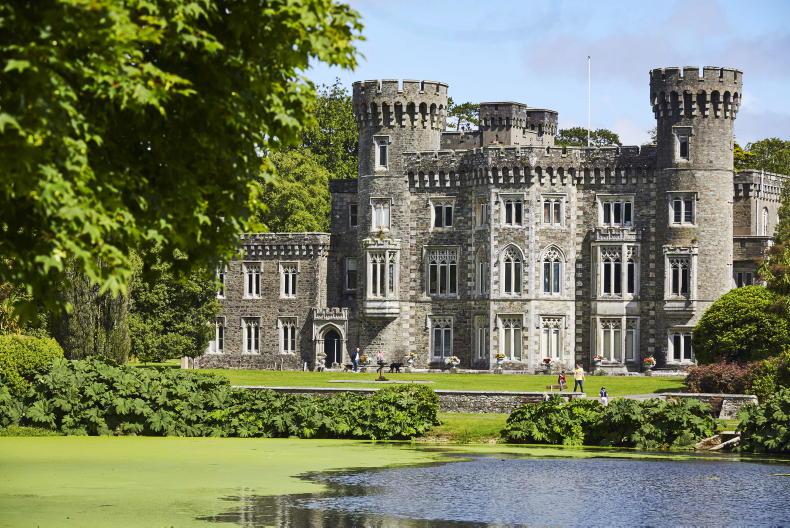




 This is a subscriber-only article
This is a subscriber-only article







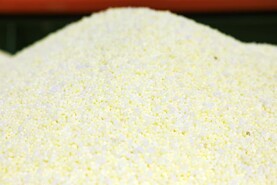


SHARING OPTIONS: